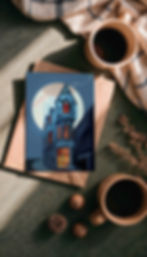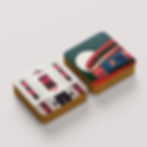Brutalist Bombay, The Kanchanjunga Towers Illustrated Art Print
The Kanchanjunga Towers
The Kanchanjunga 'Jenga-like' block belongs to today's Mumbai, or the 80's 'Bombay' when it was built. I lived in this harsh and brutal metropolis as a kid, and spent most of my professional career working in this city before moving to London.
Bombay has it's share of Modernist and Brutalist high rises. Almost every drab looking concrete tower today draws it's inspiration from early blocks of the 80s. Unlike the west, they don't have a notorious reputation. These concrete skyscrapers have always been an aspiration, a dream to rise up the society ladder, far above the mundane drone of the city below.
The Kanchanjunga Apartments- aptly named after the peak in the Himalayas, was designed by Charles Correa. This is an upscale housing block located int he posh suburb of South Bombay or 'Town', embodying the characteristics of the upper echelon of society within the community.
The Kanchanjunga towers are a direct response to the present culture, the escalating urbanization, and the climatic conditions for the region. In Mumbai, a building has to be oriented east-west to catch prevailing sea breezes and to open up the best views of the city. Unfortunately, these are also the directions of the hot sun and the heavy monsoon rains. Correa pushed his capacity for ingenious cellular planning to the limit, as is evident from the interlock of four different apartment typologies varying from 3 to 6 bedrooms each. These subtle shifts enable Correa to effectively shield these high rise units from the effects of both the sun and monsoon rains. Clearly, such an arrangement had its precedent in the cross-over units of Le Corbusier's Unite d' Habitation built in Marseilles in 1952.
The building plan bears a strong resemblance to the modernist buildings with its concrete construction and white panel facade. However, the garden terraces designed by Correa in the building got their inspiration from the feature of traditional Indian bungalow: the veranda.
Proceeds from the sale of this print, will go towards the crowdfunding of 'Grafity's Wall'- A coming-of-age Graphic Novel about expression, rebellion, ambition and acceptance painted against the backdrop of Mumbai's ever changing and evolving street-culture
What is Brutalism?
Brutalism, or New Brutalism as it was sometimes referred to, has its roots in modernism but emerged as a movement against the architectural mainstream. It placed an emphasis on materials, textures and construction as well as functionality and equality.
There has been a shift in attitude towards the architectural style of Brutalism – buildings once dismissed as ugly have now found themselves the objects of new found affection. People are coming out in support for some of the world’s most iconic buildings – voices louder and prouder than ever.
Product Info & Sizes
Matte Prints on 250gsm thick paper.
Fine art Giclee Prints on 300gsm thick paper available. (I love this, as the archival inks enhance the colours, on light texture)
A5: 5.8 x 8.3in A4: 8.27 x 11.7in
A3: 11.7 x 16.5in A2: 16.5 x 23.4in
Shipping & Returns
Please allow 8-10 days for dispatch. For urgent orders, please message me, I'll try my best to expedite.
Shipping: Within UK : Royal Mail First Class Rest of the World: Royal Mail Tracked. (10 days - 20+ days depending on the country's customs)
Please note that prints are not framed. Please be aware that colours may vary slightly from what you see on your screen, depending on your monitor settings.
Giclee prints are printed on organic 100% cotton paper. Due to the nature of the paper, there are occasional grains and specks in the texture.
































